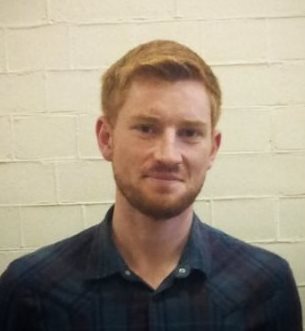Heat transfer in forced convective drying with the application of laser-induced fluorescence thermometry
Research Staff
Eoin Fanning ([javascript protected email address])
Eoin is currently pursuing his PhD under the supervision of Prof. Darina B. Murray and Dr. Tim Persoons. His PhD research focuses on an experimental characterization of heat and mass transfer in forced convective drying using non-intrusive temperature measurement techniques such as laser-induced fluorescence (LIF).
Principal investigators
Prof. Darina Murray ([javascript protected email address], Tel: +353 1 896 1129)
Dr. Tim Persoons ([javascript protected email address], Tel: +353 1 896 1936)
Industrial drying is a highly energy-intensive process accounting for up to 25% of energy consumption in some developed countries. While there is a wide range of literature on the topic of drying, there are few experimental studies which consider local heat transfer effects in drying.
A novel two-dimensional temperature measurement technique involves the use of laser-induced fluorescence (LIF) in which temperature fields of the fluid can be inferred from fluorescence images. This technique has been employed scarcely in low temperature (< 100°C) heat transfer problems involving gases. LIF thermometry may be a powerful tool for quantifying and understanding local heat transfer in drying and also in a variety of other gaseous convective heat transfer problems.

A LIF experimental setup has been designed to validate and calibrate the relationship between fluorescence intensity and temperature, for toluene vapour excited with a 266 nm laser sheet, over a small temperature scale (see figure). This experimental setup was then extended to a flow tunnel and temperature fields surrounding a heated cylinder (see figure) were determined. Initial results have demonstrated that this technique can be applied successfully in low temperature ranges.

This study also uses an instantaneous mass measurement system and infra-red thermography to study the time evolution of the moisture content and the surface temperature distribution (see video) of a saturated porous cube. Finally, the LIF thermometry technique is then applied to study the local heat transfer behaviour by measuring temperature fields surrounding the drying cube.
Funding Body
HEA PRTLI Graduate Research Education Programme in Engineering

